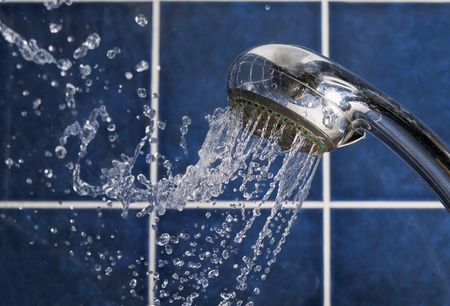Introduction to Aquariums in British Homes
Over recent years, aquariums have become a staple feature in many British homes, admired not only for their calming aesthetics but also as a rewarding hobby that fits seamlessly into the UK’s diverse lifestyles. Whether you live in a bustling London flat or a cosy countryside cottage, keeping fish offers a unique way to bring nature indoors and create a tranquil environment. In the UK, both freshwater and marine aquariums are popular choices, each offering distinct advantages and challenges. The appeal of home aquariums extends beyond their visual beauty; they provide an opportunity for relaxation after a hectic day and can be educational for families keen to teach children about aquatic life. As more Britons seek ways to personalise their living spaces while enjoying low-maintenance pets, understanding the differences between freshwater and marine setups becomes essential for making the right choice for your home.
2. Understanding Freshwater vs Marine Aquariums
Before you invest in a fish tank for your British home, it’s vital to understand the fundamental differences between freshwater and marine (saltwater) aquariums. Each type comes with its own unique requirements, challenges, and rewards. Below, we break down the key aspects you need to consider: water chemistry, equipment, and maintenance.
Water Chemistry
The primary difference between freshwater and marine tanks is the type of water used. Freshwater aquariums use tap or filtered water treated to remove chlorine and chloramine—something especially relevant in many UK regions where tap water quality varies. Marine tanks require specially mixed saltwater, replicating ocean conditions, which involves dissolving marine salts into purified water. This means careful monitoring of salinity, pH, and other trace elements to maintain a stable environment for sensitive marine species.
| Aspect | Freshwater Aquarium | Marine Aquarium |
|---|---|---|
| Water Source | Treated Tap Water | Purified Water + Marine Salt Mix |
| Main Parameters | pH (6.5-7.5), Hardness | pH (8.0-8.4), Salinity (1.020-1.025 SG) |
| Frequency of Testing | Weekly pH/Nitrite/Nitrate | Frequent pH/Salinity/Calcium/Magnesium/Alkalinity |
Equipment Needed
Your choice will also affect the initial investment in equipment. Freshwater tanks typically require fewer specialised items—just a good filter, heater (for tropical species), lighting, and possibly an air pump. In contrast, marine aquariums often demand more advanced kit such as protein skimmers, powerheads for water movement, live rock for biological filtration, and higher-spec lighting systems suitable for corals or reef setups.
| Equipment | Freshwater Tank | Marine Tank |
|---|---|---|
| Filter System | Standard Internal/External Filter | Sump System/Protein Skimmer |
| Heater Required? | If Tropical Fish Kept | Always (Stable Temperature Crucial) |
| Lighting Needs | Basic LED or Fluorescent Tubes | High-Intensity LED/T5 Lighting for Corals/Fish |
| Additional Gear | N/A or Minimal (e.g., Air Pump) | Auto Top-Off Units, Refractometer, Powerheads etc. |
Maintenance Considerations for UK Homes
If you’re after a low-fuss setup, freshwater aquariums are generally easier to maintain—weekly partial water changes and occasional filter cleaning usually suffice. For marine tanks, the routine is more involved: maintaining precise salt levels, testing multiple parameters more frequently, topping up evaporated water with fresh RO/DI water (not tap), and keeping equipment clean to prevent algae or disease outbreaks. This can mean a steeper learning curve but also greater reward if you’re keen on keeping exotic species or creating a vibrant reefscape.
![]()
3. British Climate and Its Impact on Aquarium Choice
When considering whether to set up a freshwater or marine aquarium in your British home, it’s crucial to account for the unique aspects of the UK’s climate and water quality. The local weather is often cool and damp, with temperatures fluctuating across seasons. This has direct implications for both tank setup and the types of fish best suited to thrive indoors.
How Does the UK Climate Affect Aquariums?
The UK’s relatively cool indoor temperatures, especially during autumn and winter, mean that maintaining a stable water temperature can be challenging. While most freshwater tropical fish require consistent warmth (around 24–26°C), the natural ambient temperature in many British homes may fall below this range without adequate heating. Marine aquariums, which typically house coral and saltwater species, demand even more precise temperature regulation and are often less forgiving of sudden changes.
Comparison Table: Freshwater vs Marine Tanks in British Homes
| Factor | Freshwater Aquarium | Marine Aquarium |
|---|---|---|
| Ideal Water Temperature | 24–26°C | 24–27°C (more sensitive) |
| Heating Needs in Winter | Moderate | High – requires stable heating system |
| Tolerance to Fluctuations | Generally higher | Low – sensitive to rapid changes |
The Role of UK Tap Water Quality
The mineral content and pH level of tap water vary widely across Britain. In some regions, tap water is ‘hard’ (high in minerals like calcium), while in others it is ‘soft’. Most freshwater fish available at UK pet shops are bred for adaptability but still require water that closely matches their natural habitat. Marine tanks need meticulously prepared saltwater, which involves using reverse osmosis (RO) water and marine salt mixes—adding complexity to your setup.
Key Takeaway
If you live in an area with soft or hard water, it’s easier to match local tap water conditions with many hardy freshwater species, such as goldfish or tetras. For marine setups, you’ll need extra equipment to purify and mix your own seawater regardless of your location.
4. Cost and Maintenance: What to Expect
When deciding between a freshwater or marine aquarium for your British home, understanding the ongoing costs and maintenance involved is crucial. Both types have distinct requirements that can impact your budget and daily routine.
Running Costs Breakdown
| Freshwater Aquarium | Marine Aquarium | |
|---|---|---|
| Initial Setup Cost | £100–£300 | £400–£1,000+ |
| Monthly Energy Usage | Low–Moderate (heaters, basic filters) | Moderate–High (lighting, protein skimmers, pumps) |
| Water Treatment & Salt Mix | Minimal (dechlorinator only) | Ongoing cost (marine salt mix, RO water) |
| Stocking & Decor | Affordable (common fish, plastic plants) | Expensive (live rock, corals, marine fish) |
| Monthly Maintenance Supplies | £5–£10 | £15–£30 |
| Total Monthly Running Cost* | £10–£20 | £30–£50+ |
*Estimates based on average UK household energy tariffs and prices as of 2024.
Maintenance Routines in British Homes
Freshwater tanks: These require weekly water changes (about 20%), filter cleaning every few weeks, and regular checking of water parameters. Most British tap water is suitable with just a dechlorinator added, making upkeep straightforward for busy households.
Marine tanks: Maintenance is more involved. Water changes must be done using specially mixed saltwater or reverse osmosis water—often purchased from local aquatics shops in the UK. Equipment like protein skimmers need routine cleaning, and careful monitoring of salinity and chemical balance is essential to keep marine life healthy.
Time Investment Comparison
| Freshwater Tank | Marine Tank | |
|---|---|---|
| Weekly Time Spent* | 30–60 minutes | 60–120 minutes+ |
*Includes water changes, equipment checks, and cleaning tasks typical for a British household.
If you’re looking for lower costs and less demanding maintenance routines, freshwater aquariums are generally better suited to most British homes. However, if you’re prepared to invest both time and money for a truly striking centrepiece, a marine setup can be rewarding—just ensure you’re ready for the extra commitment.
5. Fish and Plant Choices Popular in the UK
When selecting the right aquarium for your British home, knowing which fish and plants thrive locally is essential. Below, you’ll find compatible and popular choices for both freshwater and marine tanks—these are widely stocked in UK pet shops and suit a range of skill levels.
Freshwater Favourites
| Fish Species | Plant Species |
|---|---|
| Neon Tetra | Java Fern (Microsorum pteropus) |
| Guppy | Anubias (Anubias barteri) |
| Zebra Danio | Amazon Sword (Echinodorus amazonicus) |
| Corydoras Catfish | Hornwort (Ceratophyllum demersum) |
| Betta (Siamese Fighting Fish) | Elodea (Elodea canadensis) |
| Dwarf Gourami | Vallisneria (Vallisneria spiralis) |
| Bristlenose Pleco | Cryptocoryne (Cryptocoryne wendtii) |
Notes for Freshwater Tanks:
- Tetras and guppies: Excellent for beginners due to their hardiness and availability.
- Corydoras catfish: Great for keeping tank bottoms clean; peaceful with most community species.
- Aquatic plants like Java fern and Anubias: Tolerant of typical tap water conditions in the UK.
Marine Must-Haves
| Fish Species | Aquatic Plants & Corals* |
|---|---|
| Clownfish (Amphiprion ocellaris) | Xenia Coral (Xenia sp.)* |
| Royal Gramma (Gramma loreto) | Pulsing Xenia* |
| Dwarf Angelfish (Centropyge spp.) | Mushroom Coral (Discosoma sp.)* |
| Banggai Cardinalfish (Pterapogon kauderni) | Zoa Polyps* |
| Damselfish (Chrysiptera spp.) | Caulerpa Seaweed (Caulerpa taxifolia) |
| Firefish Goby (Nemateleotris magnifica) | Green Star Polyps* |
| Cleaner Shrimp** (Lysmata amboinensis) | – |
*Note: Marine “plants” often refer to macroalgae or beginner-friendly soft corals.
- Clownfish and damselfish: Hardy, colourful, and ideal for smaller marine setups common in UK homes.
- Xenia, mushrooms, and zoas: Soft corals suitable for entry-level reef tanks.
- Shrimp: Cleaner shrimp add variety and help maintain tank cleanliness.
Selecting from these lists ensures your tank not only thrives but also reflects the preferences of many UK aquarists. Always check compatibility before mixing species, and consult staff at reputable British aquatic retailers for local advice.
6. Practical Tips for Setting Up Your First Aquarium
Setting up your first aquarium in a British home can be an exciting yet daunting task. Whether you opt for freshwater or marine, it’s important to follow practical steps to ensure a healthy environment for your aquatic pets and a hassle-free experience for yourself. Here’s a step-by-step guide tailored for UK beginners:
Choosing the Right Tank Size
For most British homes, space is often a concern. As a rule of thumb, bigger tanks are generally easier to maintain because water conditions remain more stable. However, consider your available space and budget. Below is a comparison table to help you decide:
| Type | Recommended Minimum Size (Litres) | Suitable Location |
|---|---|---|
| Freshwater | 60L | Living room, conservatory |
| Marine | 100L | Dedicated stand in lounge or study |
Selecting Equipment and Supplies
- Filtration: Invest in a reliable filter designed for your tank size.
- Lighting: LED lights are energy-efficient and widely available in the UK.
- Heater: Essential for tropical fish; check compatibility with UK voltage.
Water Source and Treatment
Tap water quality varies across Britain due to regional differences in hardness. Always use a water conditioner to remove chlorine and check hardness if keeping sensitive species, especially marines. Your local aquarium shop can test this for you.
Sourcing Fish and Plants Locally
Support British aquarists by purchasing from reputable local fish shops or online retailers that deliver within the UK. This ensures you get fish acclimatised to local water conditions and reduces biosecurity risks.
Local Resources and Support Networks
- Join UK-based forums such as UK Aquatic Plant Society.
- Attend events held by The Federation of British Aquatic Societies (FBAS).
- Check social media groups for aquarium enthusiasts near you – great for advice and equipment swaps.
Remember: Patience is key! Always cycle your tank before introducing any fish, and don’t hesitate to seek advice from experienced hobbyists or staff at your local aquatic centre.
7. Conclusion: Choosing the Best Aquarium for Your British Home
Deciding between a freshwater or marine aquarium for your British home comes down to your lifestyle, experience level, and personal preferences. Let’s summarise the main factors to consider, so you can confidently select the tank that will best suit both your daily routine and the unique setting of a UK household.
| Consideration | Freshwater Aquarium | Marine Aquarium |
|---|---|---|
| Ease of Maintenance | Lower maintenance, ideal for beginners | Higher maintenance, suited for enthusiasts |
| Initial Setup Cost | Generally more affordable | More expensive due to specialised equipment |
| Fish Variety & Availability | Wide range available in UK shops | Exotic species, some restrictions on imports |
| Aesthetic Appeal | Natural, calming look | Vibrant colours and diverse marine life |
| Space Requirements | Suits smaller flats and homes | Larger tanks often required for stability |
Main Takeaways for British Homes
- If you have limited space or are new to fishkeeping, a freshwater aquarium is likely the most practical and rewarding choice.
- If you’re seeking a visually stunning centrepiece and are prepared for ongoing care and investment, a marine tank could be perfect for you.
Final Tips Before You Decide
- Assess your daily schedule—do you have time for regular water testing and maintenance?
- Consider local resources—are there reputable aquatic shops nearby offering expert advice and supplies?
- Factor in energy costs, especially during colder UK months when heating may be necessary.
Your Next Steps
No matter which aquarium type you choose, proper planning and commitment are key. Start small if you’re unsure, visit local aquarist groups or online forums for UK-specific advice, and enjoy bringing a slice of aquatic life into your home.


